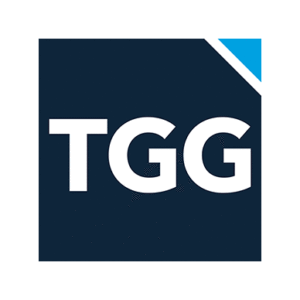Business Finance Consulting Services & Firm
Every company needs a trusted business finance consultant to provide finance consulting services. For small and medium-sized companies, the needs may vary and include, but are not limited to, assistance with banking, financing, internal controls, risk management and financial planning from a CFO. Other finance consulting services include tax strategies, financial tips, regulatory compliance, etc. The main role of a CFO is to provide a strategy in order to assist the company in gaining a competitive advantage in the marketplace.
WHAT IS FINANCE CONSULTING?
Business finance consulting is a process that helps individuals and business owners understand their financial health and make decisions about the future.
Unlike personal budget consulting services, finance consulting is focused on the most important business metrics, such as cash flow analysis and account forecasting. The end goal is to create a strategy that properly assesses your business’ history and develops a plan for moving your business forward.
To help you accomplish this, financial consulting companies can assist you with analyzing your most valuable financial data to devise meaningful KPIs and other benchmarks to track your progress toward your business goals.
Many business owners and CEOs rely on financial services consulting firms as part of their annual business planning process. Having outside input can keep you and your team focused on new opportunities while relying on clear, objective insights about your company.
What Does a Finance Consultant Do?
A finance advisory consultant is not a “financial consultant”. A financial consultant or financial advisor offers advice to help investors build wealth through financial planning, investment & insurance guidance. A finance consultant sets up financial infrastructure and business growth strategies tracking KPIs, operational reporting and other metrics to ensure that your company is making the best financial decisions based on numbers, not conjecture.
The Controller and CFO act as the finance consultants while the Staff Accountant and Accounting Manager focus on daily tasks and building the foundation for accurate and timely financials.
KPI’S & METRICS
Uncovering the most pertinent key performance indicators and metrics help you as a business owner understand the state of your business.
OPERATIONAL REPORTING
Weekly updates and daily interaction with your accounting team allows TGG to create real-time operational and performance management reporting.
CASH FLOW FORECASTING
Do not fail because of lack of forecasting. Our cash flow forecasting works with your static budget to create and estimate of future financial outcomes based on current metrics set with the help of digital technology.
BUDGETING& BUSINESS PLANNING
Budgeting relies on historical data and birds-eye understanding of not only the past but the upcoming market trends. Analysis, planning and forecasting determine your short-term and long-term financial goals.
BENCHMARKING
Industry benchmarking against competitors is a reality check. Remain competitive by using the TGG financial analyses to assess your company’s business process efficiency and productivity so you can pivot and gain competitive advantage before market trends outpace your trajectory.
Learn how an Outsourced Accounting Partner can help you grow
BENEFITS OF BUSINESS AND FINANCE CONSULTING
Reduce Operating Costs
At TGG, we work in teams of 4 accountants meaning the accounting work is always done at the appropriate level in order to produce accurate and timely TGG Way financial statements. This means you’re not paying a CFO to do AR or AP, but instead offer strategic advice in order to move the business forward.
Drive Business Value
A finance consultant company can drive more profitability to your bottom line meaning your business increases in value. Our experienced accountants bring a wealth of knowledge and expertise around GAAP, accrual accounting as well as new accounting and tax law changes that your business can leverage to your benefit.
Boost Compliance
Generally accepted accounting principles (GAAP) mean that businesses are responsible for providing reports on their cash flows, profit-making operations, and overall financial conditions. This specifically relates to the income statement, balance sheet, and cash flow statement. TGG produces GAAP compliant financial statements to ensure that if the financial information is shared with outside investors, bankers or regulators, it is accurate, reliable and consistent.
Better Tax Strategies
Your company’s tax obligation represents a sizable percentage of your annual overhead expenses. If you want to learn how to increase profitability, you might begin by reducing your tax burden. But to do this, you’ll need expert advice.
Financial consulting services can help you with tax planning by:
- Structuring your company appropriately
- Timing your deductions to ease your tax burden
- Advising on when to strategically accelerate or defer income
- Managing retirement accounts and business investments
- Leveraging tax credits
Finance and accounting consulting teams can provide more than just tax preparation. They can also help you tap into these strategies to reduce your tax burden and help you retain more of your hard-earned cash.
Financial Consulting Services
Financial Benchmarking
A benchmark is a standard that the performance of a similar entity can be measured against. It is when financial services firms use financial analytics to assess market competitiveness. Effective benchmarks have industry relevance and share certain qualities to indicate comparable market share.
Financial Forecasting
Financial forecasting is the reporting that surrounds future driven thinking for companies. A forecast is created more frequently than a budget and is based on real numbers compared against predicted numbers. Forecasting allows for purchases of raw materials for example, based on predicted demand for product.
Financial Modeling
Financial models are the mathematical algorithms created specifically for a company that helps tie different elements of forecasting, benchmarking, budgeting and cash flow management together to give a comprehensive picture of a company’s financial information. A financial model allows a company to change variables and see what those changes might do to P&L or supply chains before an event happens. A financial model is necessary to have a Plan B.
Why finance consulting is necessary for all businesses
It’s all about the numbers. If your company is making long-term strategic decisions without clear numbers then your chances of failing increase with every passing reporting period. Clarity in financial reporting is equal to clarity in business decision making.
READ OUR CASE STUDIES:

Case Study – A Private EMS Company Brings in Outsourced Team to Assist with Significant Growth

Due Diligence Leads to Successful Sale

Case Study – A Media-Buying Agency Reaps the Benefits of Having a Team of Financial Experts

Case Study – How One Ecommerce Company Transformed Their Business and Gained Superior Visibility into Their Financial Performance

Case Studies – Scaling an Online Platform

Case Studies – Preparing for Exit

Case Studies – Start-up Concept Validation

Case Studies – Ready For Growth Phase
FAQ SECTION:
What certifications and licenses are required by a financial management consultant at TGG?
Over 60% of our TGG Staff are Certified Public Accountant (CPA) or Certified Management Accountant (CMA) certified. TGG does not provide tax return preparation, audits or CPA reviewed compiled statements, therefore we are not certified by the California Board of Accountancy.
How much does a financial planner typically cost?
A financial planner will usually charge a percentage of the personal assets they manage for individuals. A financial planner is different from a CFO in that they deal with personal finances. A CFO is focused on the numbers and strategically growing a business.
What is the difference between a financial consultant and a financial advisor?
Typically, there is no real difference between a “financial consultant” and a “financial advisor.” These professionals serve as personal financial advisors to individuals and investors to help them achieve their financial goals. Both professionals can also possess a diverse array of professional credentials and licenses.
However, a “finance consultant” is generally more focused on business strategy. These individuals can help you develop your accounting department goals and other KPIs to manage and grow your business.
Finance consultants can help you align your infrastructure with your business goals and values, making your business more efficient, more effective, and more profitable than ever before. They can also help you with tax preparation and planning, minimizing the tax burdens that add to your overhead costs.
Is a financial planner worth it for my business?
How well do you know your business? As an entrepreneur, you’re undoubtedly a go-getter or a dreamer. But the best business decisions are made with actionable, up-to-the-minute data. It’s for that reason that many business owners benefit from a financial planner.
For instance, outsourcing controller services to an external firm can give you a fresh perspective on your business performance. And because you’re tapping into a team of financial planning professionals, you’ll gain the benefits of superior knowledge and experience.
Additionally, the cost of working with a financial planner is rarely an issue. Why? A financial planner can highlight ways to streamline your day-to-day operations, and the expense of hiring an external advisor is easily offset by the money you save.
Also, delegating your accounting dept duties to an exterior firm allows you to focus more directly on the revenue-generating aspects of your business, which may ultimately boost your profits as a result.
What is the difference between a financial consultant and a wealth management advisor?
Wealth management advisors typically only work with high-net-worth individuals. This means that wealth management advisors don’t usually offer any other business services, though they may work at a financial firm that does.
A financial consultant, on the other hand, can help businesses of all sizes develop their business strategies and goals. Financial consultants may also offer services for individuals as well. But if you’re in business, you’ll want to tap into the knowledgeable services of a financial consultant, preferably one who understands the needs of your industry.


